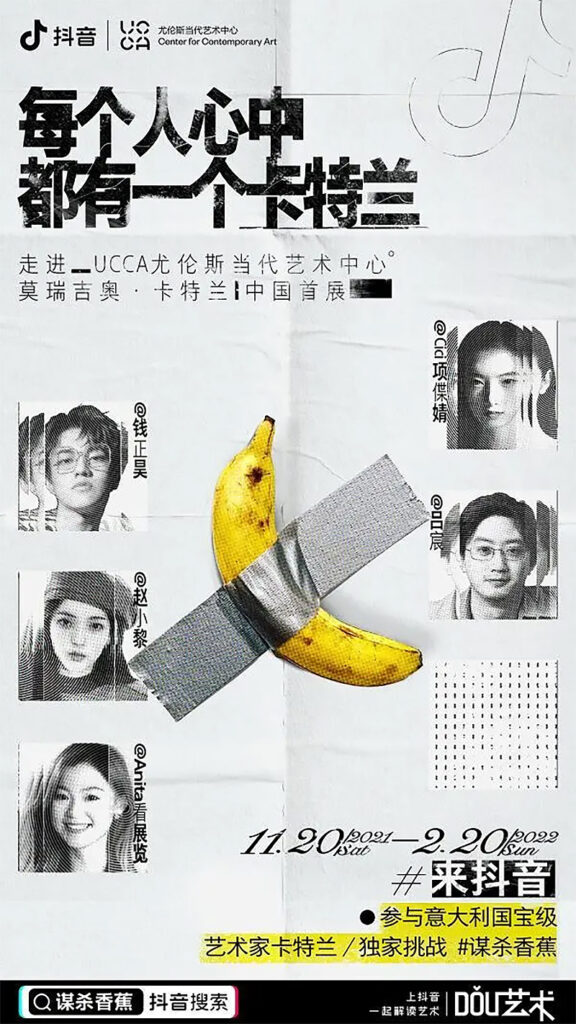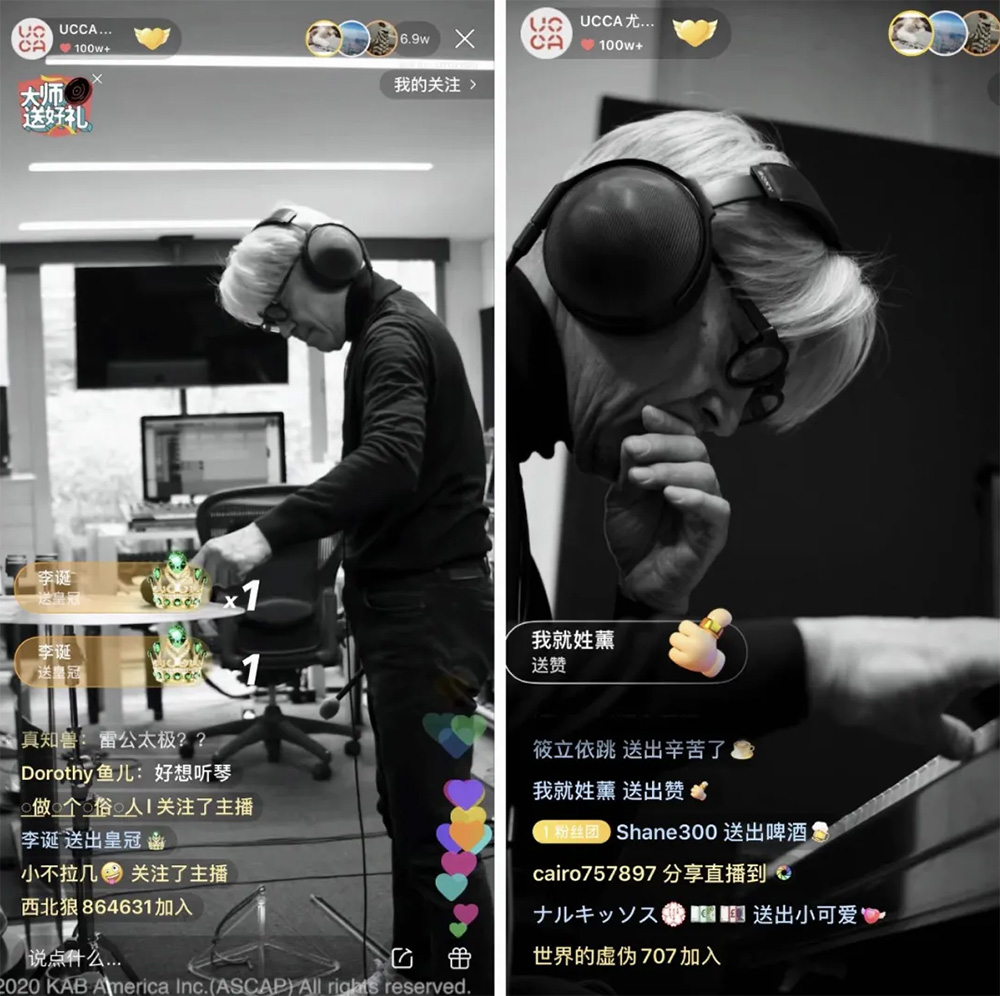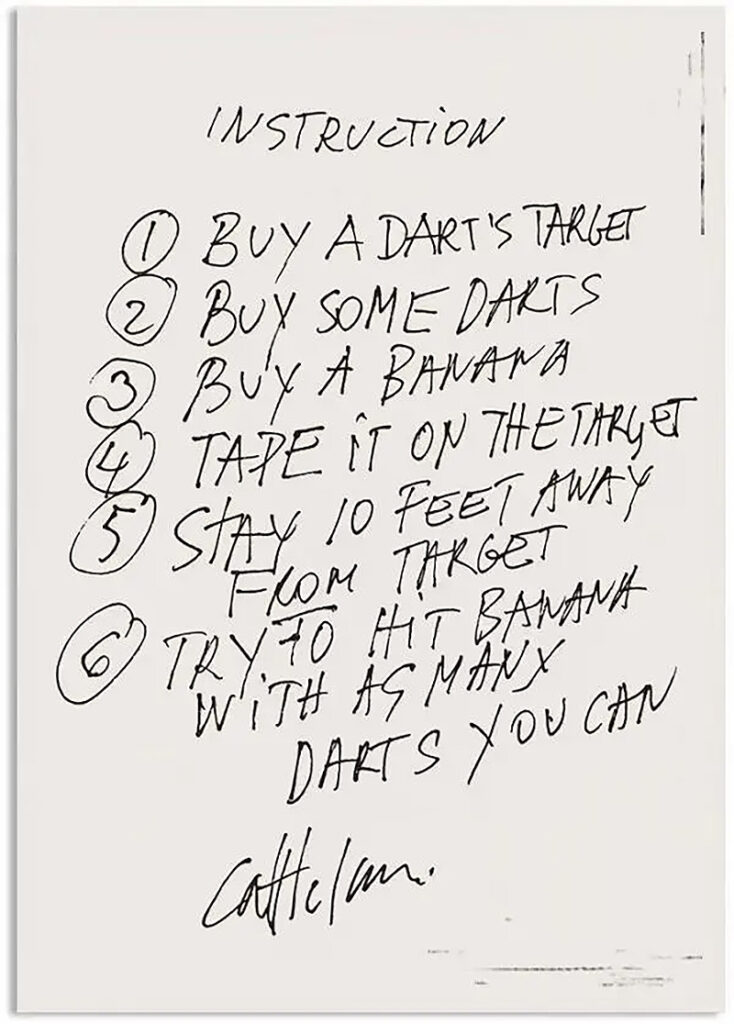Until February 20, the UCCA Center for Contemporary Art in Beijing is playing host to Maurizio Cattelan: The Last Judgment, the Italian artist’s first Chinese solo exhibition. Featuring 29 works spanning installations, sculptures, and performance pieces, the show is a display of Cattelan’s playful and often controversial approach to art that’s garnered no shortage of headlines.
Fitting for a provocative artist, the exhibition aims to trigger a dialogue with its visitors, inviting them to explore and freely interpret Cattelan’s creations. In this, UCCA has found an apt partner in Douyin, China’s leading short-video platform that boasts more than 600 million daily active users. Besides providing information and video tours of the exhibition that are available for offline viewing, the Bytedance social network has also co-launched activations to drive audience participation.

UCCA’s Douyin campaign for The Last Judgement included video tours, KOL participation, and audience challenges. Image: Douyin
In December, the Murder Banana challenge (#谋杀香蕉#), named after Cattelan’s viral 2019 work “Comedian,” invited Douyin users to post short-videos created per Cattelan’s directions (“Try to hit banana with as many darts as you can”) and share their takes on the artist’s aesthetic. The campaign was formulated by UCCA in consultation with the artist himself. According to Lingyi Kong, the museum’s Director of Brand Marketing, it has also spurred considerable growth on UCCA’s Douyin account, with the hashtag exceeding 100 million mentions.
This latest collaboration follows up on UCCA and Douyin’s earlier partnership for Becoming Andy Warhol last year. That joint program included video tours, the “How Andy Warhol Sees” livestreaming event, and a challenge dubbed “Everything Pop” (#万物皆可波普#). “The partnership between UCCA and Douyin has gradually evolved from a simpler form in the early days,” notes Kong, “to the more in-depth and diverse form it is today.”
Below, Kong expands on the collaboration between the museum and the social media platform, and its role in fueling UCCA’s online and audience strategies.
How has UCCA’s relationship with social media evolved?
UCCA has always attached great importance to social media. We were quick to launch our own presence on Weibo and WeChat, and after the rise of platforms such as Xiaohongshu and Kuaishou, we opened accounts on multiple platforms. However, while we initially focused on content output, we did not directly collaborate with the platform itself.
But during the pandemic, we partnered with Kuaishou, inviting artists like Ryuichi Sakamoto and pop band New Pants for online projects to promote our offline exhibitions. In addition to Douyin and Kuaishou, we have also collaborated with Xiaohongshu as we continued to explore further partnerships with social media platforms. In the process, we have found that the audience’s understanding and interest in art is constantly increasing.

In partnership with Kuaishou, UCCA held a special online concert by Ryuichi Sakamoto in 2020. Image: Weibo
Why the decision to launch a UCCA account on Douyin and how has the museum leveraged the platform’s features?
We carefully screen which social media platform to sign up for and choose the platforms that are more in line with our goals in terms of the number of users and the audience we want to reach. The decision to open a Douyin account was made to capture the trend of short-videos; we also have dedicated short-video editors to create such content. Platforms like Douyin have given us a new window into a younger generation of audiences, helping us to transform the traditionally “cold” and “serious” approach of museums into meaningful, more lively content, so users can brush up against thought-provoking things within a fragmented information ecosystem.

The Murder Banana challenge asked participants to create short-videos according to instructions set by Cattelan himself. Image: Douyin
Could you briefly describe the processes behind UCCA’s collaborative campaigns with Douyin, particularly its most recent activation with Cattelan?
The ideas of artists play a very important role in these online activities, so we will definitely reach out to them in advance. When devising the promotional plan, we will also pick formats that suit the artists and their works. In fact, the works of Warhol and Cattelan are well-suited to the Douyin platform, and Cattelan himself was quite interested in planning activities on the platform.
Douyin will then provide us with their feedback, such as what kind of challenges would suit the artist. We actively listen to Douyin’s input on user behaviors, and Douyin will also take to heart how we think about art. Such mutual communication has greatly helped us in our processes.
Have you encountered any challenges with the launch of your Douyin campaigns?
When we load content on the platform, what we can control are the rules and guidance on our side, which are carefully formulated following discussions with the artists. However, when the content is on a public platform, the audience’s understanding might differ and sometimes might overshoot the artist’s own directions. But we embrace the public’s opinions because everyone is equal before art. We welcome a diverse understanding of our content and invite audiences to participate in our activities in their own way.
What is the goal behind UCCA’s active online presence and multi-platform strategy?
Our main purpose is not to gain more followers, but to expand the reach of art, to popularize art. Because the offline reach of museums will be limited by geography, it may only serve audiences in a specific city and those who travel, while online platforms can help museums break through such limitations. No matter the social media activation, our intention is to get our content in front of more people, to transform offline exhibitions into a more easily disseminated online resource, so that more people can learn about contemporary art. Whether viewers swipe our feeds or view our videos — it’s a great way to promote art outside of the museum.
Translated by Min Chen



